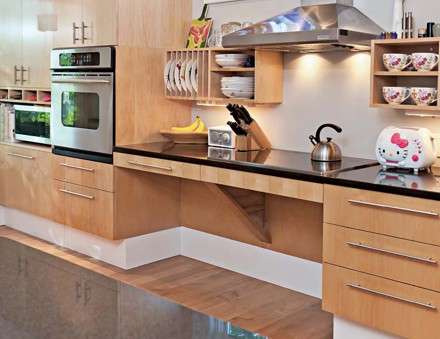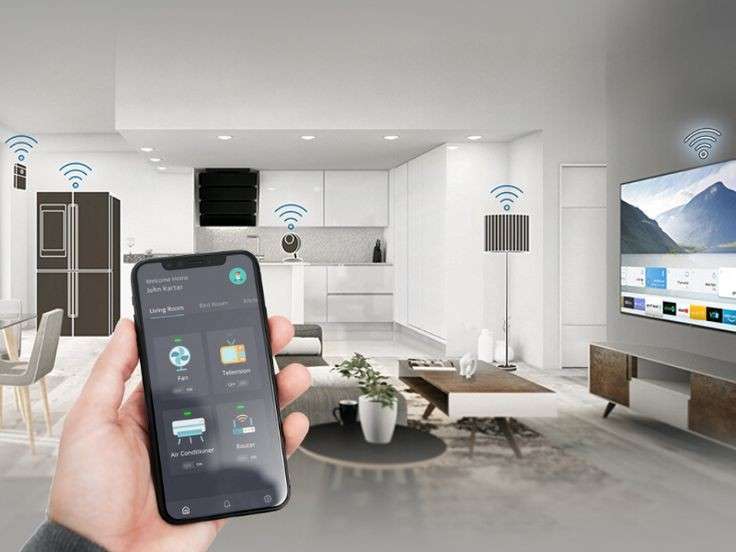Creating a home that accommodates people of all ages and abilities is essential in today’s world, where inclusivity and comfort are top priorities. Whether you’re designing for young children, older adults, or people with disabilities, accessible design is about more than just meeting basic needs—it’s about enhancing quality of life and creating spaces that promote independence, safety, and well-being.
Accessible home design focuses on functionality, ease of movement, and ensuring that all individuals, regardless of their physical abilities, can navigate the home with ease. Here are some key design strategies to consider when creating an accessible home.

1. Entrances and Doorways
The first step in creating an accessible home is ensuring that all entrances are easy to navigate. Wider doorways (36 inches or more) allow for easy access with wheelchairs, walkers, or strollers. It’s also essential to have:
- Zero-step entries at the front and back of the house, eliminating the need for ramps or stairs.
- Automatic or easy-to-operate door openers for those with limited hand strength or dexterity.
- Well-lit entrances for safety and ease of use, especially in low-visibility situations.
2. Open and Flexible Floor Plans
Open floor plans that eliminate unnecessary walls or barriers help people move freely from room to room. This design feature is particularly beneficial for individuals using mobility aids like wheelchairs, as it provides more space to maneuver. Some key points to consider include:
- Wide hallways (at least 42 inches) to accommodate mobility aids.
- Open-plan kitchens, living rooms, and dining areas for ease of movement.
- Furniture that can be easily rearranged to adapt to different needs over time.
3. Universal Design in Kitchens
Kitchens are one of the most important spaces in the home to consider for accessibility. When designing kitchens for all ages and abilities, focus on ease of use, safety, and comfort. Key features include:
- Lowered countertops (28-34 inches) for individuals in wheelchairs.
- Pull-out shelves and cabinets for easy access to dishes, pots, and pans.
- Side-opening ovens and dishwashers for easier access and less bending over.
- Touch or lever-style faucets that can be easily operated with minimal effort.
4. Accessible Bathrooms
Bathrooms present unique challenges, but they can be designed for ease of use with thoughtful planning. Some important considerations include:
- Walk-in showers with no curbs for easy access, along with grab bars for safety.
- Wider bathroom doors that allow for wheelchair access.
- Accessible toilets with higher seats for comfort and easier transfers from a wheelchair.
- Anti-slip flooring to prevent falls, especially in wet conditions.
- Vanities with open space underneath to allow for wheelchair access.
5. Lighting and Electrical Features
Proper lighting is essential for creating a safe and comfortable environment for individuals with varying abilities. When designing accessible homes, focus on:
- Bright, well-distributed lighting throughout the home, including under-cabinet lighting in kitchens and bathrooms.
- Motion sensor lighting in hallways and bathrooms to ensure lights turn on automatically when needed.
- Accessible light switches and outlets positioned at lower heights for easier access.
- Easy-to-use controls for temperature, lighting, and audio systems, including smart home technologies for added convenience.
6. Non-Slip Flooring and Textured Surfaces
Safety is a top priority in accessible home design. Using flooring materials that prevent slipping or provide extra grip is essential, especially for those with mobility impairments. Some flooring options to consider include:
- Non-slip tiles or rubber flooring in high-traffic areas such as bathrooms and kitchens.
- Wood, bamboo, or cork flooring for softer, more forgiving surfaces that reduce the risk of falls.
- Textured or slip-resistant rugs for areas where slip hazards may occur, such as entryways or near sinks.
7. Smart Technology and Automation
Smart home technology can significantly enhance the accessibility and ease of use in the home. Automation features like:
- Voice-controlled lighting, thermostats, and appliances help individuals with mobility impairments.
- Automated doors and windows that open and close with minimal effort.
- Smart home devices like medical alert systems or fall detection sensors provide peace of mind for those with health concerns or limited mobility.
8. Safety Features
Safety is paramount when designing homes for all ages and abilities. Some additional features to consider include:
- Clear signage and labeling on switches, doors, and cabinets for easy identification.
- Non-slip mats or adhesive strips in bathtubs and showers.
- Security systems with easy access for everyone in the household, including emergency alerts and remote monitoring.
9. Outdoor Accessibility
Accessible outdoor spaces are just as important as indoor ones. Consider designing patios, gardens, and yards with features that promote independence and safety, such as:
- Smooth pathways with ramps instead of stairs.
- Raised garden beds for easy gardening without the need to bend over.
- Wide gates and doorways for wheelchair access.



